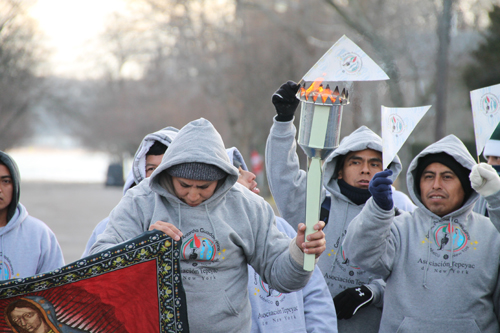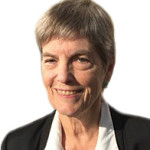Guest Spot: Immigrants should be embraced, not excluded

When I set out from Greenport last month for the National Immigrant Integration Conference in Brooklyn, I didn’t know what to expect.
It was a gathering of more than 1,000 immigration advocates, and I thought they might be pretty depressed. After all, President Obama’s plan to extend temporary relief from deportation for many unauthorized immigrants had been held up — perhaps beyond his tenure — in the courts. Perhaps the attendees would be angry at the demagoguery of Donald Trump and, to a lesser extent, other Republican presidential candidates, playing upon public fears of immigrants, refugees and Muslims. Would the three days I had committed to this meeting be one big downer?
I needn’t have worried. What emerged in plenary sessions and smaller workshops was a fighting spirit and an abiding optimism about where the immigrant flood of the past 20 years will take the country in the next decade — even in the new year.
The Democratic candidates for president set the tone. The three frontrunners all spoke — Clinton and O’Malley in person, Sanders by video. They lauded the accomplishments of new arrivals over the centuries and invoked the hoary reminder that “we are all immigrants.” But they went further. They noted that most scholars now agree that immigration in the 21st century carries more economic benefits than burdens and that crime is lower among immigrants than among the native-born.
New York’s political leaders sounded similar notes, rejecting exclusionary rhetoric and embracing a very different future. “We take people from every different place and welcome them,” said Sen. Chuck Schumer, promising to prioritize comprehensive immigration reform in the next Congress. New York City Mayor Bill de Blasio announced increased legal support for immigrants threatened with deportation or victimized by wage theft.
It was flattering to the advocates that so many political stars showed up to support their cause; Gov. Andrew Cuomo gave the most passionate speech of all. But celebrity appearances were just garnish on the main dish of the conference. Building on the theme of “New American Dreams,” panel presentations focused on such topics as new opportunities for learning English, employer involvement in workforce training, the promotion of entrepreneurship and preparation for naturalization. Welcoming America, an organization closely allied with the White House Task Force on New Americans, cited cities and counties across the country (63 at last count) that have committed themselves to immigrant-friendly plans and policies. An interplanetary visitor observing local efforts to bring immigrants into the American mainstream would be surprised to hear that an intense national conversation was taking place about their right to be in the country at all.
The conference spurred me to think about what North Fork residents (and Long Islanders in general) could do in light of the policy vacuum in Washington. Here are a couple of issues to address to ease the integration of “new Americans” in 2016.
New York is not one of the 10 states (plus the District of Columbia) that permit undocumented immigrants to obtain the special driver’s licenses permitted under the federal Real ID Act. But it should be. They drive anyway. Like everyone else in areas where daily commuting is the norm, they need to drive to work and to shop. Licensing drivers who can prove their identity and their local residence would ensure that their skills are adequate and that they are insured. It would protect all of us.
In recent years many cities and counties have issued municipal IDs. Anyone can apply for them (over 670,000 people in New York City) but they are particularly useful for people who otherwise cannot present official identification — homeless people, non-drivers and undocumented immigrants. A Suffolk County municipal ID would enable immigrants to more easily get the library cards and bank accounts that give evidence of a stable life in their new country.
A little local activism supporting these common-sense measures could reward both immigrants and their Long Island neighbors.
 Diana Gordon is professor emerita of political science and criminal justice at the City University of New York. She is the author of several books, including “Village of Immigrants: Latinos in an Emerging America,” which focuses on Greenport’s growing Hispanic population. She lives in Greenport.
Diana Gordon is professor emerita of political science and criminal justice at the City University of New York. She is the author of several books, including “Village of Immigrants: Latinos in an Emerging America,” which focuses on Greenport’s growing Hispanic population. She lives in Greenport.
Top photo: Hispanic worshippers prepare to run from Greenport to Riverhead in 2013 to deliver a holy flame honoring Our Lady of Guadalupe, a popular religious symbol. (Credit: Paul Squire, file)








